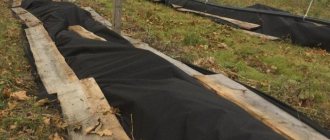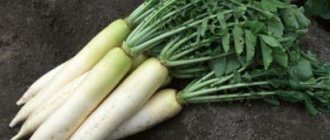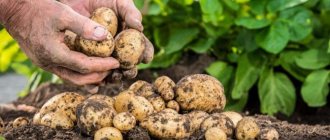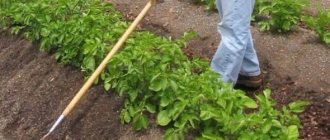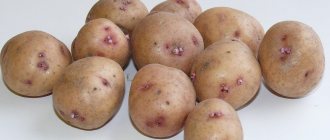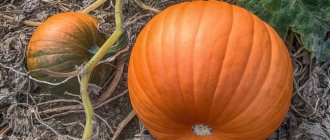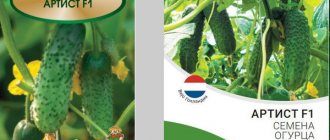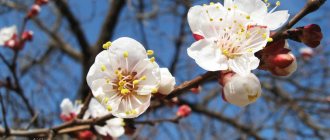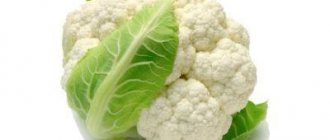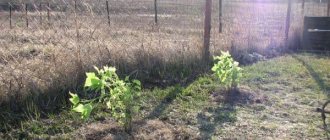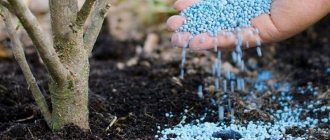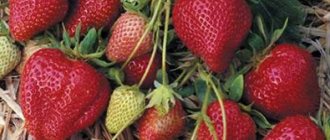History of selection
The Radar onion hybrid was developed by scientists from Holland. The goal of the breeding work was to obtain a high-yielding new variety of onion. The originator, the company BEJO ZADEN BV, aimed at winter hardiness, resistance to diseases of the species, and good shelf life.
Long-term experiments led to excellent results: the variety came out mid-season, with friendly and uniform ripening. Scientists have obtained new and improved existing qualities of culture. The genetic material was taken from the world collection bank, which stores 1.5 thousand of the best samples of onion varieties.
Bow Radar
The work was completed 20 years ago. The planting material immediately reached the fields of Europe, North America, and Asia. In Russia, the variety was registered in the State Register in 2006.
In a short time, the Radar onion variety for planting before winter won fans and spread throughout our country. It is grown by summer residents and rural residents in private farmsteads. Planting technology and the possibility of mechanized harvesting made it possible to cultivate vegetables on an industrial scale. Agricultural enterprises and farmers successfully produce Radar in their fields.
Reviews about the onion variety Radar
Gardeners speak positively about Radar onions:
Irina, Leningrad region: “I have been growing Radar for more than 5 years. This is the first winter onion that I managed to grow the first time; usually the bulbs sprouted ahead of time and died. What I like about Radar is its unpretentiousness and productivity.”
Valentina, Anapa: “I myself have been growing this onion for a long time and recommend it to all my friends and relatives. The taste is excellent, the yield is high, and at the same time it requires a minimum of effort.”
Vitaly, Voronezh region: “I’ve been planting Radar for 4 years and I really regret that I didn’t know about this onion earlier. I tried many varieties until I saw a photo and description of the Radar onion variety on the Internet. For me, the most suitable one - it gives a high yield, the bulbs are large, beautiful, and their taste is moderately sharp. The harvest is stored perfectly, I didn’t even expect this from winter onions.”
Description of the variety
The bulb has a regular round shape, maybe slightly flattened. Covering scales are golden-yellow, tightly fitting. In the description, breeders emphasize that the onion variety Radar for planting before winter has a thickness of the upper husk of 0.4-0.6 mm. This determines the winter hardiness of the vegetable.
Thick, tightly fitting scales prevent the plant from freezing out in the cold winter soil. Without snow cover, seedlings winter quietly in the ground at -15 °C; under snow they can withstand up to -23 °C. Outer “clothes” contribute to good keeping quality of the crop. In a dry, ventilated room, onions can be stored almost without loss for 8-10 months.
The leaves are dark green, covered with a waxy coating. The film protects the crop from diseases. The feather is juicy, rich in vitamin C, thiamine, and folic acid. Of the macroelements, the most are potassium and magnesium, and of the microelements - zinc, iron, copper.
Note! The size of the bulbs is average and above average. The weight of a standard head is 120-150 g, some specimens reach 300-500 g.
Winter variety Radar has large heads
Description and characteristics of winter variety
Onion Radar was developed by breeders from Holland. This winter hybrid ripens in the mid-late period and is characterized by a high level of productivity. If you plant onions before winter, you can get fresh greens in the spring, and ripe onions in May - June.
The vegetable plant produces dark green feathers with a slight waxy coating. Its bulbs are light yellow, round in shape, slightly flattened, with dense internal and external scales. The weight of one piece can reach 150–350 g. The fruits are tasty, tender and juicy. They can be stored for a long time, which is unusual for winter varieties. Bulbs can be used for various purposes: fresh or processed, used for planting.
Did you know? At Yale University (USA), the first 3 cookbooks are preserved in the form of plates. They contain a record of the tradition of the inhabitants of ancient Mesopotamia to use different types of onions.
Main advantages and disadvantages
The Dutch hybrid garden root crop is conquering more and more acreage. Vegetable growers are attracted by a large list of its advantages. Among the advantages of culture are:
- Dense peel and thin neck (this vegetable can be stored for a long time).
- Stable harvest. From 1 sq. mm, 7-8 kg of fruits are collected.
- Beautiful presentation.
- Good taste (the root vegetable is tender even without heat treatment).
- When properly examined, the plant does not shoot arrows.
- Early ripeness.
- It takes root in any climate on different soils.
- The seedlings germinate almost 100%.
- Strong immunity at the genetic level.
The gardeners did not compile a list of shortcomings.
Note! Only the low productivity of the species is noted compared to spring varieties.
Characteristics of the variety
Having read the description and photo of the Radar onion, we can safely say that the characteristics of the variety are high. But such indicators can only be achieved with proper care and planting.
Productivity
Winter onion set Rada is a high-yielding variety. The weight of the head is 150–500 g. Productivity increases when the variety is grown in favorable conditions and in regions with snowy winters.
Variety Radar – medium ripening period. When planted before winter, the harvest appears after 250 days.
Important! To grow an early harvest, the seedlings are planted a month before the onset of frost.
Resistance to diseases and pests
The variety is resistant to many diseases and pests. But if the rules of care are not followed, onion fly and downy mildew may appear on Radar winter onions. To prevent the occurrence of diseases, it is necessary to regularly carry out preventive spraying, observe crop rotation and not plant onions in one bed for more than 2 years.
It cannot be grown after bulbs and legumes, potatoes, carrots and celery. The best predecessors are:
- garlic;
- mustard;
- rape;
- cereals, except oats.
Advantages and disadvantages of the variety
Before purchasing Radar winter onions, you need to read the description of the variety and know all the positive and negative qualities.
The advantages include:
- powerful root system;
- thin, golden scales;
- long-term storage;
- taste qualities;
- early ripening;
- undemanding to planting and care;
- lack of arrows;
- 100% germination of seeds;
- frost resistance;
- resistance to diseases and pests.
Most summer residents consider low productivity indicators to be a disadvantage compared to spring plantings.
Difference from other varieties
The peculiarity of this variety is its taste: unlike other types, it is semi-sharp and delicate. The transversely elliptical or perfectly round shape also catches the eye.
The yield is not the highest - 160-200 c/ha, but stable from year to year. For comparison, the varieties Karatalsky and Boterus yield 400-450 c/ha.
A remarkable property of Radar is its adaptation to any climatic zones and soils, as well as the preservation of fruits without germination for a long time.
During the growing season, the plant almost does not throw out arrows. Their formation can be caused by improper care, namely an excess of mineral fertilizers in the soil.
Climate requirements, growing regions
The variety is registered in the North Caucasus region. Gardeners of the Krasnodar, Stavropol Territories, and Rostov Region were the first to cultivate Radar.
In subsequent years, farms in central Russia began planting Radar onions before winter. When the winter-hardy qualities of the variety were proven there, it “captured” the northern regions: the Urals, Siberia and the Far East.
Frosts down to 23-25 °C with snow cover are not harmful to the plant. In regions with a more severe climate, Radar is planted in early autumn, mulched, and covered with spruce branches. Immediately after the snow melts, the covering material is removed.
How to store onions Radar
You can store the sets in boxes, containers, bags and nets. The room must have good ventilation. Onions must be inspected periodically; spoiled and rotten specimens must be thrown away.
Important!
Onions intended for human consumption must not only be dried, but also their roots and feathers must be trimmed.
Onion Radar is considered one of the best varieties. Many summer residents are interested in its description, how planting and care is carried out before winter, and reviews from gardeners. The culture is unpretentious, even minimal care will allow you to get a good harvest.
Reproduction methods
Radar is propagated by seeds. They are obtained this way: they plant last year’s large commercial onion. She immediately throws out the peduncle - a thick hollow tube. At its end, inflorescences in the shape of a ball are formed. Each of them contains up to several hundred flowers. They fade and turn into a seed pod. They are small and black, hence the name “chernushka”.
Onion seeds Radar
Next year, “Chernushka” is sown densely in the beds; by autumn, each seed produces a small onion set.
Useful recommendations for gardeners
To get a high-quality harvest every year, you must adhere to the following recommendations:
- Onions should be planted in an area where legumes, tomatoes, cabbage, and potatoes previously grew. The worst predecessors for it are all types of onions, garlic, carrots, and cucumbers.
- It is possible to plant a vegetable plant in the same place only for 2 years in a row. In the future, it can be returned to the same bed after 5 years.
- It is better to prepare high, warm beds for planting.
- After harvesting winter onions, other early-ripening vegetables can be planted in the empty beds, which can ripen until autumn.
- It is necessary to plant and dig onions during the waning moon.
So, growing Radar winter onions is not difficult. The main thing when cultivating is to observe planting dates, properly prepare the soil, carry out high-quality cultivation and protection from diseases and pests.
Benefits of autumn planting
Gardeners of dachas, private rural farmsteads, and farms are switching to winter planting. The interest is as follows:
- In autumn, planting material is cheaper.
- When the seeds are in the ground, there is no need to worry about storage.
- In the fall, there is less work in the garden than in the spring, so vegetable growers have more free time.
- Winter plantings of onions suffer little from downy mildew - downy mildew and onion fly.
- The harvest is healthy because diseased seed material dies in severe frosts.
- The plant does not follow the arrow.
- The harvest is better stored.
Summer residents are also attracted by the ripening period - it is 3 weeks shorter than regular spring onions.
Note! When spring varieties are just planted in the ground, winter varieties are already cut into greens.
Onion care
If you find yellowed, dried ends on the onion feathers, it is quite possible that the bed is affected by the onion fly. To check, pull one onion out of the ground and carefully examine the root crop. A diseased bulb will contain fly larvae that burrow a canal in the middle of the vegetable and eat the inside.
Onion fly
You need to fight the onion fly in several stages. To do this, do the following: dilute 250 grams of table salt in seven liters of water. It is worth noting that seedlings taller than five centimeters should not be treated with this solution. On ungrown plants, after such disinfection, after 6 hours, it is necessary to wash off the remaining salt from the onion feathers. Seven days later, the procedure is repeated, only now you need to dissolve 500 grams of table salt in the same volume of water.
If white or cream-colored spots appear on the bulbs, and they become larger every day, then this may indicate signs of peronosporosis (downy mildew). This disease develops quickly during the hot season with heavy rainfall. In order to protect onions from the manifestation of this disease, carefully inspect the nigella for sowing. The seeds should be a rich shade without spots. If you find diseased seedlings, you can do the following:
- water the seedlings with a 0.1% Nexion solution at the rate of 0.5 liters per 1 sq.m.
- After 10 days, water again.
- It is necessary to remove infected bulbs and always with soil.
- the area with onions should be treated with a 65% Fentiuram mixture.
- seven days later, treatment is carried out with table salt diluted in water.
If diseased bulbs are found in an area with overgrown vegetables, it should be sprayed with an 80% solution of Cuprosan or Ditan. After seven days, repeated treatment is carried out. How to process onions before planting in the fall is described here.
Onions infected with downy mildew
To get a positive result, you can add liquid soap to the solutions.
Infected bulbs must be pulled out immediately upon detection . If a disease does appear, then onions are planted in this place after at least 4 years.
If you cannot purchase the above products, you can use Bordeaux mixture. To treat the beds, you need to dilute 50 ml of the drug in 10 liters of water. The area is sprayed every 10 days.
Bordeaux mixture is used to treat peronosporosis and scab.
Radar onions are also susceptible to cercospora blight, a fungal disease of onions. Infected onion feathers become dark at the tips and are covered with gray-brown spots with a yellow border. This disease is quickly transmitted by wind from other infected vegetable crops. The fungus overwinters in seeds and plant debris. You can fight this disease using the same means as for treating peronosporosis. In addition, ash and tobacco dust, which are sprinkled on the onion bed every 5 days, are of great help.
Another fungal disease is anthracnose . Infected onion feathers become covered with black or dark green “pads” surrounded by dark “cilia.” In addition, they become deformed and die. To combat this disease, the same means are used as for peronosporosis. But it is worth slightly increasing the dose of chemicals, since the fungus that causes this disease is stable to the action of chemicals.
How to choose sets
The yield of onion variety Radar depends on the seed material - sets. It is bought in trusted places: specialized stores, agricultural farms, familiar farmers, good neighbors. You should always be sure that this is an onion for winter sowing.
If the seed fund is packaged, pay attention to what material it is in. Plastic bags without vents are not suitable. The seeds do not breathe in them, and the bulbs may become damp and moldy. It is better to take it in boxes or bags made of breathable material. Look at the accompanying documentation. Each batch of sets is supplied with a label indicating the time of ripeness, storage and planting rules.
The appearance of the bulbs will tell you about the health of the material. Therefore, winter onion sets Radar are palpated and poured into hands. If empty specimens are found, soft, wet, easy to crush with your fingers, mold and traces of rot are visible, the material is rejected.
Onion sets
Reproduction: planting in winter
There are many distinctive characteristics that testify in favor of Radar onions when planting this vegetable crop for the winter.
First, short time for planting - when planting and caring for the Radar onion, no special knowledge is required, which takes a long time to describe, and a technician for special care.
The second plus is that bulbs that have sprouted in spring are characterized by a healthy harvest . While diseased root crops die during the winter. It is worth planting in the fall, since planting material is much cheaper than in the spring.
The features of planting winter onion varieties are practically no different from each other.
Before planting, it is better to choose a plot of land where legumes, potatoes, grain crops, corn, cucumbers and tomatoes previously grew. The place should be level, fairly sunny and hidden from strong winds. You should not choose a site in a lowland, because in the spring it can be flooded with melt water and the onions will dry out. It is better to plant seedlings and grow them in open ground, on a high piece of land. In addition, the soil must rest from onions for at least 5 years if you want to get high yields.
You can select fertilizers and feed it 1-2 months before planting before winter, this will improve the structure of the soil. However, onions of the Radar variety can be planted in any type of soil, as they are completely unpretentious.
Luka Radar is suitable for any soil
It is worth purchasing the smallest bulbs for planting, this will allow you to plant a larger number of sets on the site.
Before planting Radar onion sets, soil treatment and cleaning is required. It is necessary to plant the bulbs before constant frost sets in (at least a month before), as it needs to let go of the root system a little. It is recommended to cover vegetable crops planted for the winter, but Radar onions do not need this. But, if you wish, you can insure yourself against unpredictable weather conditions. You can cover the planted bulbs with dry leaves or grass. But do not use plastic wrap for this.
If necessary, you can cover the onions with straw for the winter.
In the spring, after the snow has melted and the soil has warmed up slightly, the cover is removed.
Before planting, be sure to carefully inspect the planting material. The bulbs should be approximately 1 cm in diameter. When planting a large set, there is a chance that it will sprout very early and shoot out. In addition, onions grown from small onions last longer.
Bulbs for planting must be free of spots and blemishes. Rotten ones should not be planted at all.
Right before planting, you need to loosen the soil. The bulbs are planted approximately 10 centimeters from one another . The rows should be placed at a distance of 25 centimeters from each other.
It is better to plant onions at a distance of 10 cm from each other
2 Planting technology
The first step is to determine the timing for planting onions before winter. Do not delay time - the best option would be to plant the seedlings a month before the expected onset of frost. The dormant period of the Radar variety will end no earlier than the first days of December, and therefore the sets will not have time to freeze or start bolting. Chernushka should be sown in August in order to be able to thin it out.
In the future, you need to choose the right place - it should be a flat, sunny piece of land, well protected from draft winds. It is strictly forbidden to plant winter onions in lowlands, as melt water will flood the plantings and the bulbs will dry out. In addition, in low beds frosts are felt much more strongly, and there is a possibility of freezing of seedlings that have come out of dormancy.
It is important to remember that planting onions in the same place for more than two years in a row greatly depletes the soil, as a result of which even the most careful care will not help to grow a decent harvest. Potatoes, legumes and celery are considered bad predecessors of onions.
2 weeks before planting, when the optimal location has already been chosen, the soil must be prepared by digging it deeply and adding the necessary fertilizers. As a rule, humus is added to onion beds, but for this purpose you can use wood ash, potassium salt or superphosphate.
Before the planting procedure itself, it is important to carefully inspect the planting material. The bulbs should not exceed 1 centimeter in diameter, then the resulting turnips will be stored longer. There should be no damage or stains on the sets that indicate infection or rotting.
The sets are planted in holes created in freshly loosened soil, at a distance of approximately 8-12 cm from each other. The interval between rows is usually maintained at 20-25 centimeters.
After planting is completed, it is recommended to cover the beds with fallen leaves or straw. Polyethylene is not suitable for this, because the plantings will need oxygen. With the onset of spring, when the snow melts and the soil begins to thaw, the covering material will need to be removed.
Requirements for winter planting material
When the sets are stored, they absorb moisture. It becomes an environment for the appearance of putrefactive bacteria and pathogenic microbes. Do not plant onions in the ground like this - the yield and keeping quality will be low. Therefore, the seed fund is prepared for planting in several stages:
- They sort through the material (discard dry, diseased, spoiled specimens).
- Dry near the heating radiator for 2-3 weeks.
- Soak in hot (60-65 °C) saline solution (1 tbsp per 1 liter of water).
- Keep for 20-30 minutes. in steep potassium permanganate (purple). For convenience, you can place it in a large bowl directly in the net.
- Soak for 2 hours in a solution of mineral fertilizers.
Then the onion sets Radar are dried and planted in the ground.
Specifics of soil preparation for winter growing
Preparing the soil for planting Radar seedlings can take 1.5-2 weeks. During this time, you should dig up the soil under the beds as deeply as possible and disinfect the soil with a solution of KMnO4 (potassium permanganate), then apply fertilizer. The best option is environmentally friendly humus; you can add a little ash.
Preparing the soil before planting winter onions in winter
It is not recommended to apply fresh manure as fertilizer to Radar variety seedings - it provokes the formation of large leaf masses and loose bulbs, which are completely unsuitable for storage.
In the absence of natural fertilizer, you can use Azofoska complex fertilizer, potassium salts and superphosphates.
Soil preparation
The soil is prepared in advance. They dig using an accessible method (shovel, cultivator). Add ash - it reduces the acidity of the soil and works as an antiseptic. The structure of clay soils is corrected with sand.
Level the area with a rake and let the soil “breathe” for 2-3 weeks. Organic matter is not added, as it will cause the plant to shoot arrows.
Important! The terrain of the area for planting is chosen to be flat or with a slight slope. They are afraid of sharp winds and constant drafts. Lowlands are not suitable for the plant.
How to plant
Onion beds are made in places where legumes, tomatoes, and potatoes grew in the previous season. Crop rotation for crops is an important condition.
The process goes as follows:
- No holes are made for sowing. Dig furrows 6-10 cm deep. The distance between them is 20-25 cm. To make weeding easier, use the standard size of a hoe or hoe.
- Lay out the sets (place them by slightly pressing them into the loose soil). Leave a distance of 5-6 cm between the bulbs. If you want larger heads - 10-12 cm. When they count on spring greenery, they plant more often. In this case, in March-April the crop is pulled out for food, leaving more space for other plants.
- The furrows are filled with compost, peat or sand. More often, gardeners fill the grooves with earth and level them with a rake.
In places with severe frosts, the planting is covered with spruce branches.
Landing instructions
Onion Radar, namely its planting and care, is not much different from the process of planting other varieties.
There is no need to make holes for each onion set. Furrows are dug 4-5 cm deep. If the soil in the area is dense, it is advisable to add sand to the bottom of the row.
- The planting depth of the bulb is 2-3 cm. It is simply lowered into the groove and placed without pressing.
- The distance between the rows is 20-25 cm, between the onions - 5-6 cm. If you want to get a larger onion, the gaps should be larger.
- If there is not enough space for planting on the site, they are planted on the greens along with the bulbs on the turnip, and in the spring they are pulled out and the onion is pulled out for a feather. Moreover, onions often sit on greens, almost one to one.
The grooves can be filled:
- compost;
- peat;
- sand.
Some gardeners fill it with small rotted sawdust. You can simply fill it with soil, take a rake and level the soil.
If the climate in the region is very harsh, it is advisable to cover the bed with spruce branches. You can cover it with cut velvet flowers and carrot tops. This will help the onions not to freeze.
Harvest and storage
The Radar onion is considered ripe when the leaves wither, lose their bright green color, and die. If the deadline has come, but the pen does not go down, vegetable growers artificially help the process.
Harvesting and preparation for storage take place simultaneously:
- The vegetable is pulled out of the ground by the tops (usually done by hand). If the heads lie too deep, dig up the root crop with a shovel.
- The fruit along with the feather is placed under a canopy and dried in the breeze - the bulbs will bake in the sun.
- When the tops are dry, cut off the dry roots.
- Then they dry it in the shade for a few more days, put it in baskets, boxes, and send it for storage in a cellar or barn.
The cellar may have the right temperature, but high humidity. The bulbs will begin to sprout. Therefore, a dry, cool, ventilated room is preferable.
Onion harvesting Radar
When to plant onions Radar before winter
The timing of planting Radar onions in the fall to winter across the vast territory of Russia is advisory in nature. The main thing is that the vegetable takes root before lasting frosts.
Important! The further south the region, the later the planting date is allowed. Focus on the weather forecast and lunar calendar. Root crops are not planted during the full moon.
By region, the approximate dates look like this:
- South of Russia – end of October-November.
- Leningrad region - early October.
- Moscow region - mid-October.
- Volgograd region - the last days of October and until mid-November.
- Western Siberia – the second half of September and all of October.
Planting and caring for winter onions Radar
Planting winter onions Radar is carried out subject to simple rules. These are the timing of planting, digging the beds and preparing planting material.
Onion planting dates
Sevok can be planted throughout October. The period is determined by climatic conditions and region of growth:
- In the North-West region, seedlings are planted in early October.
- In the Moscow region - in mid-October.
- In the Volgograd region, Radar can be planted in early November.
When to plant onions Radar before winter
For high yields, experienced gardeners become familiar with the lunar calendar. Radar onions are not planted during the full moon phase.
Weather conditions are also a significant factor for growth and development. If warming is not expected, and frosts do not appear in the near future, then you can start planting Radar onions before winter.
Planting onions before winter, video:
Planting dates for winter onions Radar in Siberia
The harsh Siberian weather causes a lot of trouble for gardeners. Many of them do not dare to plant winter onions in their garden plots. But thanks to its cold resistance, Radar is ideal for the local cold and snowy climate.
To harvest an early harvest, the seedlings are planted in mid-October and early November.
Preparing the beds
Productivity depends on the right location. The beds are made in an open, level, well-lit place without drafts. Growing seedlings in lowlands is ineffective, since with the advent of warming, the beds will be in water, which will lead to the loss of the crop.
The beds are prepared in advance, a month before planting. After digging, the soil is fed with complex mineral fertilizers and disinfected with a copper-containing solution. For feeding, it is better to use wood ash, humus or rotted compost. It is not recommended to fertilize the soil with fresh manure, as the plant will build up green mass and make the bulb loose. This vegetable cannot be stored for long periods of time.
Due to its unpretentiousness, the variety can be planted in any soil.
Bow Landing Radar
The variety does not require much care. To obtain a rich harvest, you need to take care and follow simple rules:
- Onion sets Radar are planted in rows, to a depth of 4 cm, so that the neck deepens by 2–3 cm. The interval between the bulbs should be 10 cm, and between the rows 20 cm.
- When using small sets, the depth should be 2–3 cm, when planting large specimens – 3–4 cm.
- To ensure high yields, it is better to plant in a checkerboard pattern.
- The planting material is covered with soil and mulched. After planting, no watering is required.
- Dry leaves, straw, humus, tops or spruce branches are used as mulch.
Growing winter onions Radar
Growing seedlings is easy, and even a novice gardener can handle it. For successful cultivation, you need to listen to the recommendations of experienced gardeners:
- In spring, mulch is removed from the garden bed to prevent overheating of the soil.
- Watering is carried out as necessary, after which the soil is loosened and weeds are removed.
- The first feeding with ash is carried out immediately after the snow melts.
- The second feeding is carried out after the foliage appears. For this purpose, growth stimulants and immunomodulators are used.
- Preventative measures against diseases and pests are carried out every two weeks. To do this, the plant is treated with fungicides or copper oxychloride. If air humidity is high, treatment is carried out once every 7 days.
Mistakes that gardeners make when growing onions Radar:
- incorrectly chosen planting date - winter onions germinate in April;
- If the location is incorrectly chosen and watering is abundant, the bulbs will rot;
- the bulb does not germinate if the planting depth is more than 10 cm.
Care in spring and summer
In places where plantings overwintered under spruce branches, the first thing in the spring is to remove the shelter. When the soil dries out, the beds are weeded. The goal is to give the underground part of the plant access to oxygen and disrupt the root system of the weeds.
Watch the shoots. If weak, invigorate with the following compounds:
- 1 tbsp. mullein, 1 tbsp. l. urea per bucket of water. Funds are enough for 3 sq. m. Water between the rows or at the root.
- Superphosphate, saltpeter, potassium chloride are mixed in a ratio of 30:40:20 g per bucket of liquid. The expense is the same.
- Vegeta, 2 tbsp., is suitable for chemical preparations. l. which is diluted with 1 tbsp. l. urea in 10 liters of water. The specified volume is consumed per 2 square meters. m of sown area.
You should not get carried away with mineral fertilizers, because plants accumulate them in the roots.
Watering and weeding give an excellent effect. The soil at a depth of 4 cm should always be moist. If there is not enough rain, the garden bed is watered in the evening. It is more economical to use automatic drip irrigation. You can use a watering can, but you must try not to get it on the leaves. In dry summers, plantings are irrigated 1-2 times a week.
Feather is an indicator of the content of nutrients in the soil. If it turns yellow, there is not enough potassium, the tops dry out - there is not enough phosphorus.
In the summer, weeds are weeded in the rows, they are not allowed to grow above 4 cm. They draw food from the ground and keep the rows damp. Because of this, fungi develop.
Features of planting before winter
Despite the absolute undemanding nature of the Dutch onion Radar to growing conditions, to increase productivity you should adhere to the correct agricultural practices and plant planting material in the ground at the right time.
Benefits of autumn planting
When planting winter onions in the autumn, it is possible to grow a healthy harvest 2 weeks earlier than when planting them in the ground in the spring. This is the main advantage of cultivating the variety before winter. In addition, autumn planting has other positive qualities:
- Sevok planted at this time is practically not affected by downy mildew (downy mildew).
- Having planted before winter, the gardener no longer needs to worry about the safety of planting material during the winter.
- In the fall, vegetable growing lovers have more free time for planting.
- Low cost of sets compared to the cost of onions in the spring.
- Harvested bulbs are stored longer and better.
- The harvest is exceptionally healthy; diseased specimens die under the influence of low temperatures.
- Bulbs planted in autumn are distinguished by a high level of resistance to onion fly damage.
- Increasing the productivity of the planted crop.
Landing dates
They begin to plant onions on October 10, but the autumn planting dates for Radar directly depend on the climatic conditions of a particular region and the weather:
- In the Leningrad region, winter onions are planted in early October.
- Planting in the Moscow region takes place in mid-October.
- In Volgograd, onions are planted starting in the last ten days of October and ending in early November.
- In Western Siberia, planting work is carried out from mid to late October.
Read also: 10 early grape varieties: super early, super early and very early
All indicated dates are recommendations; planting material should be planted in the ground taking into account the weather forecast. In addition, before planting Radar onions, you need to familiarize yourself with the requirements of the lunar calendar. There are favorable and unfavorable days for planting vegetables, and they depend on the phase in which the Earth’s natural satellite will currently be. So, it is not recommended to plant onions during the full moon phase.
To grow a healthy crop in the garden, you must first familiarize yourself with the weather forecast for the near future. If no warming is expected, and there is still one month before the onset of stable cooling, then you can start planting seedlings. Only rooted specimens will be able to withstand the harmful effects of negative temperatures.
Preparing the bed
Competent agricultural technology is the key to a high-quality and quantitative harvest of the Radar variety. When choosing a location for onion plantings, preference should be given to a flat, well-lit area protected from draft winds. Planting a crop in a lowland is ineffective, otherwise with the advent of warming, when the snow begins to melt, the water will flood the bed and the crop will die. To prevent such consequences, you need to provide a drainage system in advance or build high ridges.
Preparatory measures should be carried out in advance, 2-3 weeks in advance, so that the soil settles and the bulbs are not washed out under the pressure of melt water. To avoid the development of dangerous diseases, the bed will need to be treated with disinfectant solutions that effectively fight soil parasitic individuals. Disinfect the soil with a solution of potassium permanganate or copper sulfate (1 tablespoon of the product per 10 liters of water). This amount will allow you to process 5 square meters. m of soil.
After all the procedures, the soil is loosened and fertilizer compounds are applied, which compensate for the lack of useful components in the soil. Among the effective ways to enrich beds with nutrition are the use of rotted organic matter and mineral complex fertilizer.
Humus is used at the rate of 3-5 kg per 1 sq. m, but to enhance the effect, double superphosphate (2 tbsp) is added to it. It’s also good to add wood ash to this mixture.
Landing technology
To properly plant onions before winter, you must adhere to the following recommendations:
- Planting nests are made in the prepared row at a distance of 10 cm from each other. To provide planting with a sufficient amount of sunlight and heat, a gap of 15-20 cm is maintained between the rows.
- When using small onion sets Radar (1.5 cm in diameter), the depth of the hole should be 2-3 cm, otherwise it will be difficult for it to germinate.
- For planting large specimens, the depth is 3-4 cm.
- To prevent the plantings from becoming more dense in the future, it is effective to plant the seedlings in a checkerboard pattern.
Among gardeners, there is a practice of planting bulbs cut in half. There will be success only if the roots are preserved on each of the parts. But it is better to plant the whole onion, so the guarantee of a healthy harvest will be one hundred percent.
Preparing for winter
In order to preserve the planted bulbs, the bed is covered with a layer of mulch. They use dry vegetation, peat, spruce branches, tops, but you should not use plastic film, since it does not allow air to pass through, and young green shoots may die. The best option for additional shelter would be to use geotextiles, a material with a high degree of breathability.
If the bed is covered with leaves or straw, then spruce branches or dry branches are laid on top so that the mulch is not blown away by the wind and exposes the plantings. In the spring, when the weather is warm, the mulch layer is removed.
Onion Radar, as one of the varieties of winter crops, needs to comply with the basic rules of agricultural technology. The grown crop, after long and thorough drying in the fresh air under a canopy, can be stored for a long time and used not only fresh, but also for preparing various culinary dishes. To get sets from seeds, you should follow the basic rules: purchase high-quality material, check their expiration date. You should not plant seeds that have been sitting for a long time in the ground - they have a low germination rate.
Diseases and pests
Onion variety Radar for planting before winter is a plant with increased immunity. Resistance to diseases - 8 points out of 10. But high humidity leads to downy mildew, which is characteristic of this type of disease. Gray spots on the leaves signal the onset of a fungal disease.
The onion field is treated with HOM two or three times, at intervals of 10 days. Copper sulfate solution and Bordeaux mixture work well. A 1% preparation is sprayed on the leaves when they have not reached 10 cm in height.
Important! To prevent products from rolling off a smooth feather, liquid soap is added to the solutions.
These preparations are suitable for treating plants against other fungi and scab.
Among the vegetable pests, the onion fly is a nuisance. She lays larvae at the bottom, which then gnaw through the passages and damage the head. They are identified by the appearance of their feathers - they lose their elasticity and whitish spots appear.
Onion fly larvae
Marigolds and marigolds growing nearby repel insects. When the fly has already multiplied, the diseased plants are pulled out and removed along with the soil. The planting is treated with “Aktara” and “Mukhoed”. Effective insecticides “Alatar”, “Karate Zeon”.
To prevent planting, they are dusted with ash and watered with a saline solution (250 g of salt per 7 liters of water). After 6 hours, wash off the salt from the leaves. The height of the plant should be no more than 5-6 cm.
Features of planting and growing
Radar onions can be grown from sets or seeds by sowing them as seedlings. Most often, gardeners choose the seedless method because it requires less effort.
Preparing for landing
First of all, choose high-quality planting material: seedlings with a diameter of up to 1 cm, without damage, signs of rot or germination. The larger the bulbs, the higher the risk of bolting next year.
Winter Radar onion sets are dried in advance: laid out on a warm, but not hot radiator and left for 2-3 weeks. After this, the planting material is disinfected: the bulbs are placed in a saline solution (1 tablespoon of salt per 1 liter of hot water) for 5 minutes, and then in a strong solution of potassium permanganate for half an hour. Then the seeds are thoroughly washed in clean water.
Approximately 1-1.5 months before planting the seedlings, prepare the soil. The soil is cleared of plant residues, dug up, watered with a solution of potassium permanganate for disinfection, and fertilizers are added: humus, superphosphate, wood ash and potassium salt.
Soil requirements
This variety does not have any special requirements for soil. Onions grow well in any soil, regardless of its composition and acidity.
Dates, scheme and rules of planting
The sets are planted during October; the exact timing depends on the climatic conditions of the growing region. In the North-Western region it is planted at the beginning of October, in the Moscow region - in the middle, in the Volgograd region planting is permissible even at the beginning of November.
Planting pattern:
- Prepare the beds at a distance of 20-30 cm from each other.
- Make furrows about 4 cm deep in the beds.
- Place the bulbs in them, deepening them by 2-3 cm (for large specimens - 3-4 cm) and maintaining an interval of 10 cm.
- Sprinkle the planting material with soil and mulch the beds with dry leaves, straw, humus or spruce branches.
Radar can also be grown from seeds. They are sown in August on a pre-prepared and fertilized plot according to the 1x10 pattern, deepening to 3 cm. Then the soil is watered and mulched.
Features of cultivation
The quality and quantity of the harvest largely depend on how correctly the place for planting the onions was chosen. The site should be well lit and protected from drafts, located on a plain or a small hill. Moisture often accumulates in lowlands, which leads to crop destruction.
This variety is not recommended to be planted where bulbous and legume crops, potatoes, carrots and celery previously grew. The best predecessors are garlic, mustard, rapeseed, and cereals (except oats).
Nuances of care
Radar is an unpretentious bow. However, to obtain a high-quality harvest, it requires minimal care in the form of regular watering, loosening the soil and fertilizing.
Watering mode
In mid-May, onions begin to be watered. The optimal frequency of watering is 1-2 times a week, depending on the climate of the region and the amount of precipitation.
Loosening the soil and weeding
The soil is weeded as necessary - weeds are removed so that they do not take moisture and nutrients from the soil.
Loosen the soil shallowly so as not to damage the root system of plants. The first time this is done immediately after removing the winter shelter, and then after each watering or precipitation. This procedure improves the moisture and air permeability of the soil and prevents the formation of a hard crust on the surface.
Top dressing
Plants are fed twice:
- in the spring, after the mulch is removed;
- when the plants have 4 leaves.
The most suitable fertilizers for onions:
- mullein mixed with water in a ratio of 1:10;
- bird droppings solution (1:15);
- wood ash, dry or diluted in water (1 tbsp per 10 l).
Disease and pest control
Mistakes made in caring for onions can lead to a decrease in its immunity.
The development of downy mildew (peronosporosis) is caused by improper watering and waterlogging of the soil. Affected plants are sprayed 2-3 times (with a break of 10 days) with the preparation “HOM” or a solution of copper sulfate. For preventative purposes, leaves that have reached a height of 10 cm are sprayed with Bordeaux mixture, and the beds are powdered with wood ash.
The most dangerous insects for Radar are onion flies. To prevent pests from spreading throughout the area, onions are sprayed 2-3 times with saline solution (1 glass per 10 liters of water) and regularly dusted with wood ash or tobacco dust. In case of severe damage, plants are treated with insecticidal preparations, for example, “Aktara” or “Alatar”.
Harvesting
Onions are removed from the garden when the covering scales become dense, dry, and golden yellow. At this point, the stem lies on the ground. When more than 70% of the plantings have settled down, the crop is pulled out manually or dug up with a pitchfork. Onion harvesting equipment is used on large areas.
The harvesting date for winter onions is determined by the calendar. From planting to ripening, 250-270 days pass (but it all depends on the weather).
Important! Vegetable growers who orient themselves towards the moon harvest their onions as the night star wanes: at this moment all the juices go to the head. In the increasing phase - to the above-ground part. Root crops are not harvested during the full moon.
The winter onion hybrid Radar shows excellent characteristics in taste, yield, and preservation. Russian summer residents and farmers practice autumn planting of vegetables. This crop ripens 3 weeks earlier than conventional varieties and does not shoot out.
The harvest stays well in a cool, dry room until next year. The variety is propagated by seeds, from which onion sets are obtained. Care does not require bookish knowledge and experience and comes down to watering, weeding, and pest control.
Winter varieties: choosing the right ones
For winter farming, it is recommended to choose specially bred plants, frost-resistant hybrids, and short-day varieties. Onions planted in winter should form bulbs when there are 12 to 14 hours of daylight. Late varieties, as well as onion varieties grown in warm southern regions, are not suitable for planting in winter.
Incorrectly selected seed does not withstand winter well and freezes, which leads to bolting of green shoots and poor yield.
Experts involved in winter farming give preference to varieties from breeders from Holland.
- "Shakespeare". This is one of the most popular and reliable winter varieties. It can also be classified as an early ripening vegetable: it takes only 75 days for the head to ripen. The color of the shells (scales) is brown, the flesh is white, very juicy. The taste of the onion is semi-sharp. Characteristic features of the variety: rounded shape and large bulbs (about 100 g). Also, “Shakespeare” onions stand out among winter varieties due to their dense outer shell, which allows it to tolerate low temperatures (down to -18) even without snow cover. If the winter is snowy, the bulbs can withstand lower temperatures without damage. It is worth noting that most winter crops freeze at minus 15 in the absence of snow. This variety of onion is resistant to disease.
- "Radar". This is a promising variety with an average ripening period. “Radar” stands out among other winter varieties due to its excellent taste, as well as good performance during long-term storage. This winter onion has a good yield. The bulbs are large, weighing up to 150 grams. In favorable years and with proper care, the heads grow up to 300 grams. The color of the winter husk of Radar is light yellow.
- "Ellan." It belongs to the early ripening species; the harvest has been harvested since mid-June, when last year's supplies have run out, and there is still more than a month before spring onions ripen. This variety can be grown using winter technology: seeds are planted (requires watering) or sets (without watering). "Ellan" are beautiful straw or yellow colored bulbs. Round onion (diameter 6–8 cm) weighing 80–120 grams. The bulbs are juicy white with a pleasant sweetish taste.
- "Senshui" (yellow). Often summer residents of the middle zone give preference to the winter variety "Senshui". This is an early-ripening, very productive crop, resistant to bolting and powdery mildew. The bulbs are large, flat-round in shape, and store well.
- Other varieties for winter growing. Also planted in winter are bulbs of such varieties as the German “Stuttgarten Riesen” with large flat-round bulbs, the productive “Sturon”, which is very popular in Europe, the early ripening variety “Centurion”, the frost- and drought-resistant “Kip-Well” and others.
Keep-Well Centurion Sturon Stuttgarten Risen Senshui
Ellan
Radar
Shakespeare
